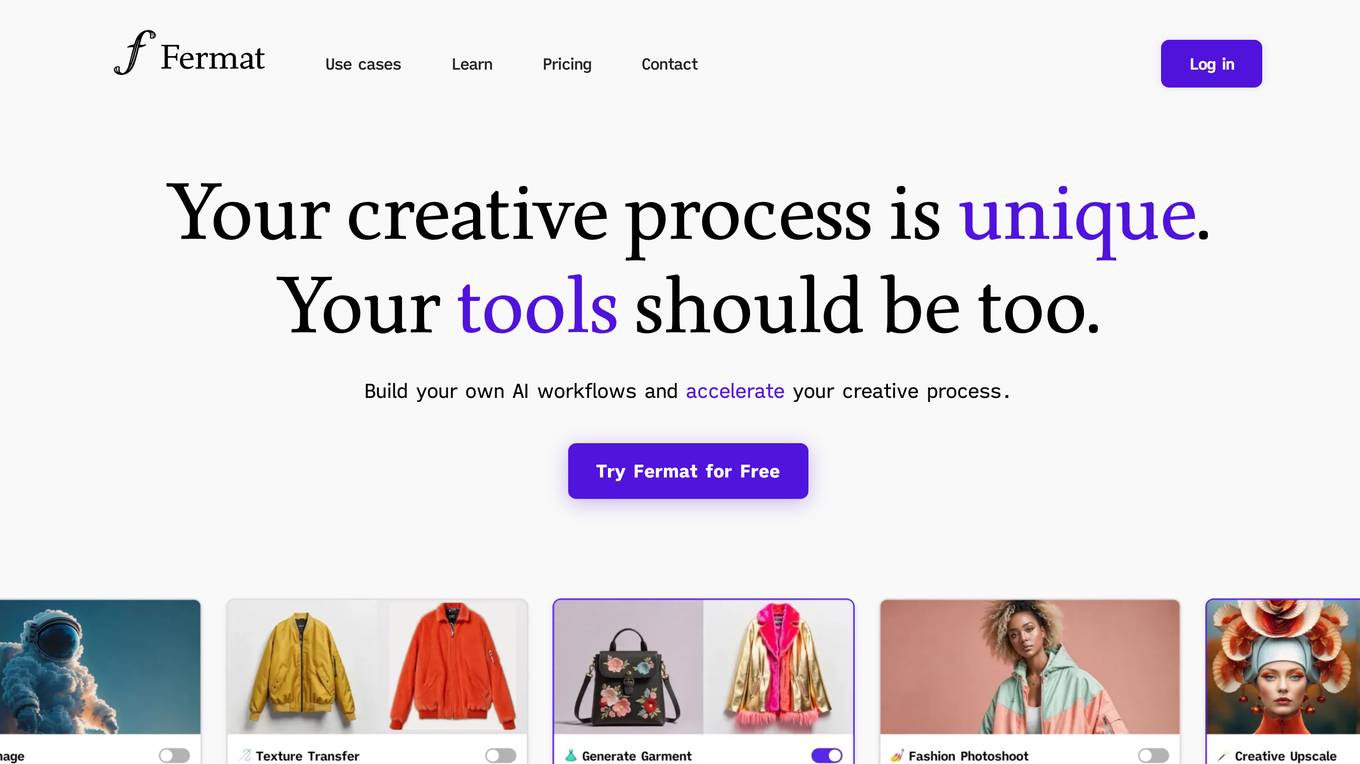Best AI tools for< Vectorizing >
1 - AI tool Sites

Fermat
Fermat is an AI toolmaker that allows users to build their own AI workflows and accelerate their creative process. It is trusted by professionals in fashion design, product design, interior design, and brainstorming. Fermat's unique features include the ability to blend AI models into tools that fit the way users work, embed processes in reusable tools, keep teams on the same page, and embed users' own style to get coherent results. With Fermat, users can visualize their sketches, change colors and materials, create photo shoots, turn images into vectors, and more. Fermat offers a free Starter plan for individuals and a Pro plan for teams and professionals.
site
: 0
0 - Open Source AI Tools
No tools available
0 - OpenAI Gpts
No tools available